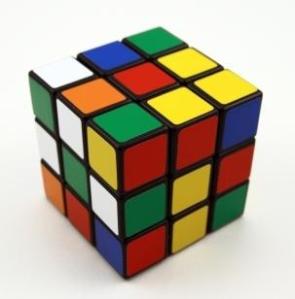by Reni Gorman What is Problem Solving?
What is Problem Solving?
Whenever a living creature has a goal but doesn’t know how to accomplish it, they engage in problem solving. (Holyoak & Morrison, 2005) Problem solving is considered the most complex of all intellectual functions, as a higher-order cognitive process that requires activation and control of more routine or fundamental skills in order to solve the problem at hand. (Goldstein & Levin, 1987) There are a number of methods for problem solving, including:
Difference reduction, in which we keep reducing the distance between the current state and the goal step by step;
Means-end analysis, where we work backwards from end goal and set sub goals; and
Analogy strategy, where we find similar problems we have solved with pervious strategies and try those same strategies on the new problem.
This is just a basic list; there are many other problem-solving methodolgies. So, how can we set up our learners to succeed?
Conditions under which Learners might Demonstrate Good Problem Solving
Gestalt psychologists have outlined a number of features that make problem solving more difficult, they are as follows: (Holyoak & Morrison, 2005)
Grouping, when all elements needed to solve the problem are not grouped, but rather scattered. Problem-solving becomes easier if all elements to solve a problem are grouped.
Distraction, think of distracters used when testing learners, the more there are the harder it is to solve the problem.
Functional fixedness, when solving the problem requires that something be used for something other than what it was made for. Using a bunch of pieces of cloth to tie together to form a rope latter is not as intuitive as if rope was just lying around.
Set effect, if we always use a certain method to solve a problem and suddenly that does not work, we have to unlearn the previously learned solution and it is harder than starting from scratch without the set effect.
Based on the list above, if we offer learners a problem where:
- All the elements needed to solve the problem are grouped,
- There are no distractions
- All objects used to solve the problem are used the way they were intended, and
- The learners will not be reminded of previously experienced, typical problem solving strategies because the problem is so unique
We will have created a condition where the learners will most likely demonstrate good problem solving. However, this approach may not be appropriate for everyone. This approach may only be appropriate for teaching beginners; perhaps advanced learners need just the opposite to challenge them.
Conditions under which Learners might have Difficulty with Problem Solving
In order to challenge more experienced learners, we can do just the opposite: make the conditions under which learners solve the problem more difficult. We can make sure all the elements needed to solve the problem are scattered and not grouped, there are several distractions, all objects used to solve the problem are used in a different way from the way they were intended or are used every day, and we can design the problem so it superficially looks like a very easy problem that would invoke memories of previous strategies, when in fact it is not and will need new strategies.
Setting up a problem in this manner would surely stretch the knowledge and skills of any good problem solver. The goal, of course, is making them a great problem solver.
Resources
Goldstein F. C., & Levin H. S. (1987). Disorders of reasoning and problem-solving ability. In M. Meier, A. Benton, & L. Diller (Eds.), Neuropsychological rehabilitation. London: Taylor & Francis Group. Retrieved July 7, 2008 from Wikipedia, the free encyclopedia.
Holyoak, K.J. & Morrison, R.G. (2005). The Cambridge Handbook of Thinking and Reasoning. New York: Cambridge University Press


